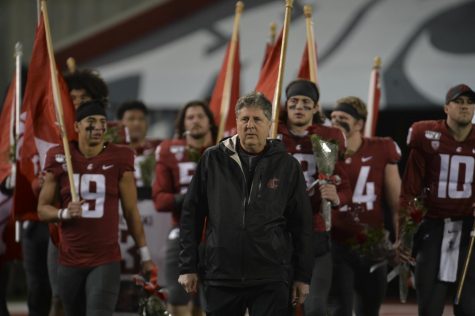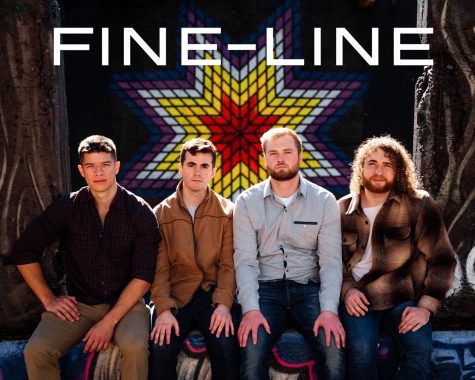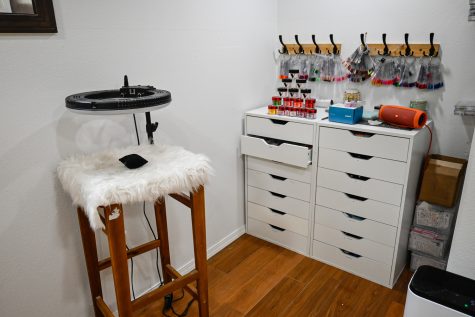Research reveals need for cross-dressing by athletic plus-size women
August 26, 2016
The athletic fashion industry needs a wakeup call, or at least a new study says so.
A recent study found that plus-size women usually resort to crossdressing in order to find suitable clothing for workout wear. This is due to an inability to find comfortable exercise gear in the women’s section.
The study was conducted by WSU Apparel, Merchandising, Design & Textiles (AMDT) Assistant Professor Deborah Christel, Professor Linda Bradley and Murrow College of Communication doctorate student Nicole O’Donnell.
The study began with interviewing plus-size women on their experiences with working out. An unanticipated discovery that came from the study was that a majority of the women said they had to wear men’s clothes to be comfortable, Christel said.
“Over 80 percent (of the women) had said ‘I wear men’s clothes because women’s isn’t available (and) if it is, I don’t like it and it doesn’t fit well,’” Christel said.
According to the study, a majority of the 56 women interviewed stated that they had “limited freedom in dress, and reported crossdressing in men’s clothing to engage in physical activity, which resulted in a perceived lack of gender expression.” Their feelings toward this conclusion were angry, but resigned.
This is not to say there are not women who choose to dress in men’s clothing for the sake of comfort. However, the key factor is the lack of freedom these women claim to have when looking for proper workout clothes.
“You instead look for clothes that don’t make you look so fat,” a woman from the study said. “For example, I don’t use stripes, striped clothes or with square patterns because I’m going to look like a ball.”
Crossdressing has sometimes been considered a way to empower women, such as dressing like a man to serve in the military. There is also a demographic of LGTBQ women wearing men’s clothes to represent their identity.
Crossdressing also tends to have a negative connotation, often used to refer to drag queens. The technical definition, however, is to wear clothing that is opposite of the wearer’s gender, Bradley said.
“Clothing is the most intimate, personal thing that we put on our bodies every day,” Christel said. “It nonverbally communicates … who you think you are on the inside.”
The term plus-size is defined differently depending on the perspective. Much of the criticism the fashion industry receives relates to what they believe is a plus-size woman that may be average in size.
In this study, a plus-size woman was one who wore size 14 and up, Christel said. The focus was on their clothing size rather than variables like body mass index (BMI) or actual weight.
“The fashion industry doesn’t deal with the average American woman,” Bradley said. “The industry doesn’t want to deal with real. They want to deal with mythical thin people.”
Clothing made for exercise varies depending on the form of physical activity — for example swimming, yoga or weight lifting. Generally, athletic clothing is made of tight-fitting spandex material. One of the problems is that athletic brands of clothing tend to run small.
The other major issue is a massive social and cultural bias against overweight women. The assumption is that overweight people are not active or healthy, Christel said.
In reality, research has shown that women who may seem overweight are still living what can be classified as healthy. Those who want to work out are not provided the equipment they need to be active.
“We have a skill set to design for a variety of body types,” Christel said. “I’ve surveyed hundreds of fashion designers and a majority of them have very negative attitudes towards obese people.”
The attempts to cater for plus-size women have become that start at one size and multiply the measurements equally. However, this causes the seams to hit the wrong places on the shoulder or hip/legs, and it can be seen that this formula does not take into account the parts of the body that do not get bigger like the shoulders or neck, Bradley said.
Men do not have the same issues. In American culture, a larger man is not considered less masculine. Whether big with muscles or a little chubby, the gender stereotype is that no man wants to be the little guy, Bradley said.
“Tightness of clothing has become synonymous with femininity,” O’Donnell said.
Online shopping can give women access to comfortable clothing that fits, but only if they’re patient enough to put up with buying, returning and re-buying clothes. There is not a stigma attached to wearing men’s clothes, but it is seen as a problem when women feel that that is their only option, O’Donnell said.
In Bradley’s class, Multicultural Perspectives on the Body and Dress, she discusses how other cultures view the body. In Europe, an ideal man’s body is thin and lean. Some parts of Africa have women going to fattening houses so they can increase their chances of marriage, Bradley said.
Simply looking around the WSU campus shows how body types vary. A short, thin boy can dominate on a soccer field while a tall, heavy-set woman is a black belt in judo. Some students in the SRC wear yoga pants and T-shirts while others are in shorts and sports bras.
“I am sure women at WSU have experienced varying levels of frustration with exercise clothing, bras and swimwear,” O’Donnell said. “We have the ability to change the market by requesting more options from apparel companies.”
Christel said she hopes to integrate this study in a class at WSU. There needs to be equal access to clothing choices for women of all shapes and sizes, she said.




















